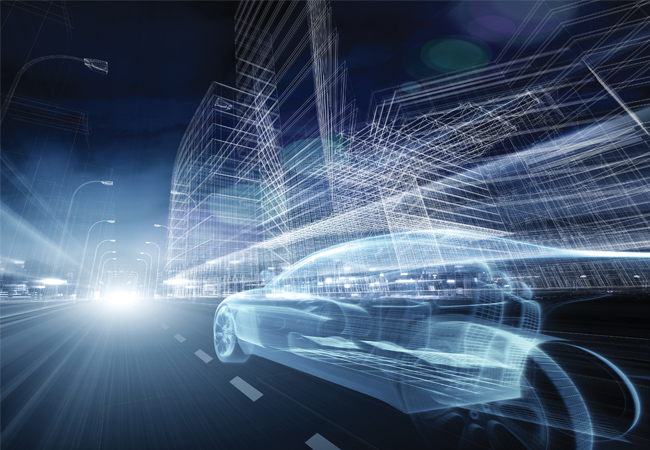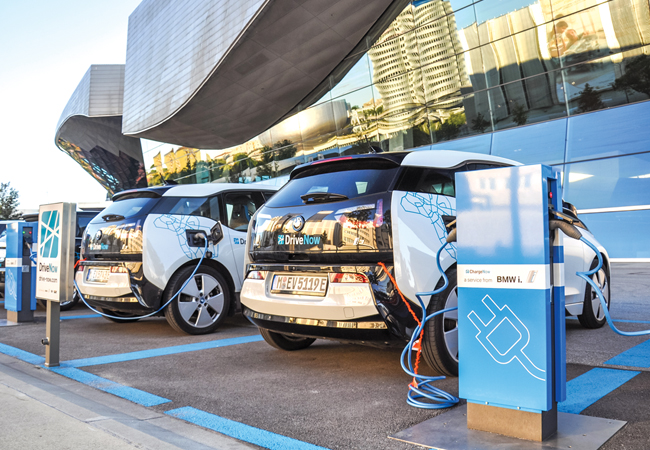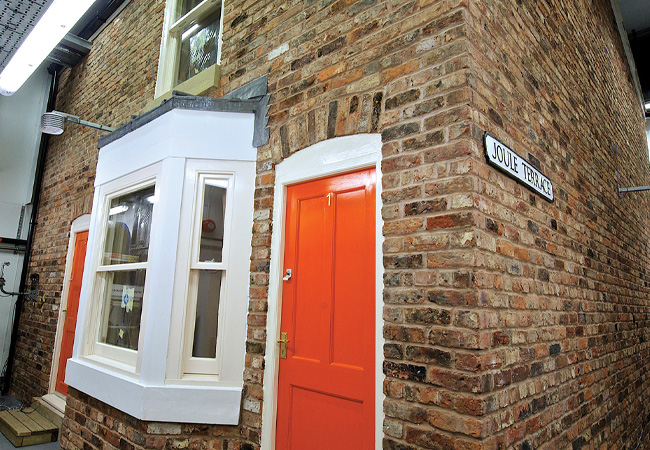
As the conversation grows around the sustainable built environment, electric vehicles (EVs), low carbon technology and smart grid solutions, a recent research project has focused on the potential benefits of integrating EVs with batteries and renewables in the home.
With 34 million EVs expected to be on UK roads by 2040, the impact of the transition to electric transport is likely to have a significant impact on the electricity sector, both on the demand and supply sides – with batteries in EVs not only demanding more energy but also offering the potential to offer more flexibility to the Grid for energy storage.
The Home as a Virtual Energy Network (Haven) feasibility study – a collaboration between the University of Salford, Honda Motor Europe, Good Energy and Upside Energy – examined how much value vehicle-to-grid (V2G) and vehicle-to-home (V2H) enabled electric vehicles can add in the context of domestic home energy networks.
The study found that EV drivers operating a full energy network could expect to save around £300. This can be done by using storage such as home batteries and smart hot water tanks to maximise self-consumption of solar photovoltaic (PV) power generation and by sharing electricity to and from the grid in an efficient way.
However, it also found that there remained issues with coordination and integration of controls to optimise such systems using multiple assets. It also highlighted the need for hardware costs to fall to encourage investment in these solutions.
Installed technology
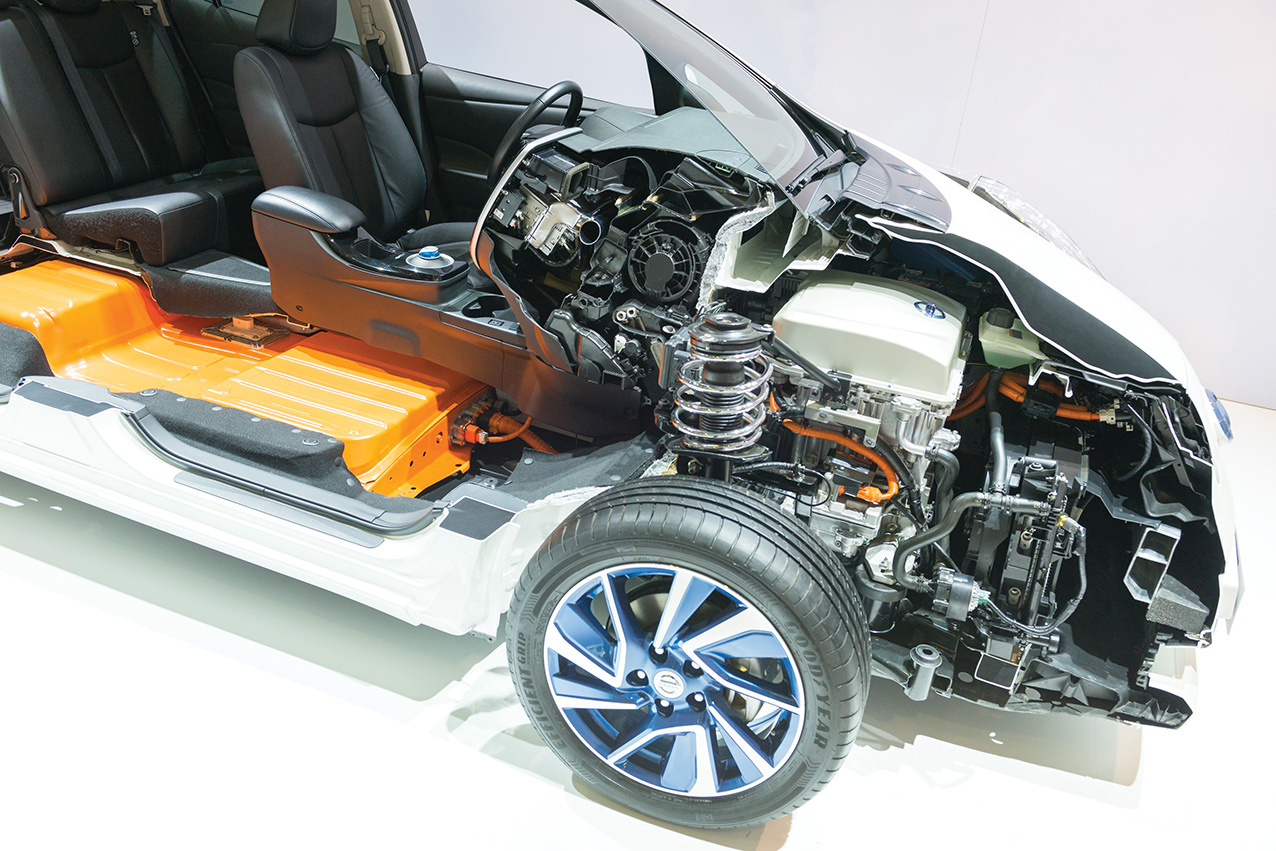
Nissan Leaf with battery (shown in orange)
The equipment installed in the Salford Energy House for the Haven project:
- Tesla Powerwall 2 (13.5kWh)
- Honda Power Manager V2G enabled EV charger
- Nissan Leaf (40kWh)
- Mixergy hot water tank (180L)
- Nibe air source heat pump (VMM 320)
Background
Funded by innovation agency Innovate UK, the exploratory study was attempting to determine the potential for V2G in the UK domestic market. The researchers adopted a dual approach to assessing the value of V2G and V2H systems, through modelling and real-world testing.
In-depth modelling was carried out by two Haven study partners, digital energy management solutions firm Upside Energy and renewable electricity supplier Good Energy, which developed modelling approaches and assumptions independently. This enabled the study to remove (or identify) any bias and allow comparison between independent models.
Real-world ‘ground truthing’ of the models was carried out at the university’s Salford Energy House (SEH) testing facility – a Victorian-style two-bedroom terrace house built inside an environmental. It can replicate almost any weather condition including rain, snow and sunshine in a controlled way and vary temperatures between -10˚C to 30˚C. It was used to subject different configurations of home energy systems to a wide variety of real-world consumption scenarios and a number of EV usage profiles. (See panel ‘Installed technology’ for a list of the equipment).
Professor Will Swan, director: Energy House Laboratories at University of Salford School of Science, Engineering and Environment, leading the Applied Building and Energy Research Group at the SEH, explains: ‘Because we had the Energy House already in place, we were able to build relatively inexpensively a complex, smart domestic energy systems demonstrator, of which V2G was a component.’
Establishing parameters
The Haven study sourced EV usage profiles from a publicly available database (through the My Electric Avenue field trial) to establish typical low, medium, and high usage profiles of users within representative weekday journey parameters.
The different modelling approaches by Good Energy and Upside Energy resulted in the two companies exploring different energy tariff scenarios and combinations when modelling for interaction with grid energy suppliers/purchasers. This included combinations of day-ahead (DA) market electricity prices, use-of-system (UoS) revenues (DUoS and TNUos), dynamic firm frequency response (DFFR) and balancing mechanism (BM) revenues, as well as day-night time of use (ToU) price profiles, covering a range of potential revenue streams potentially available to users of V2G solutions.
Table 1: Minimum, average and maximum benefit for each configuration (vehicle to grid)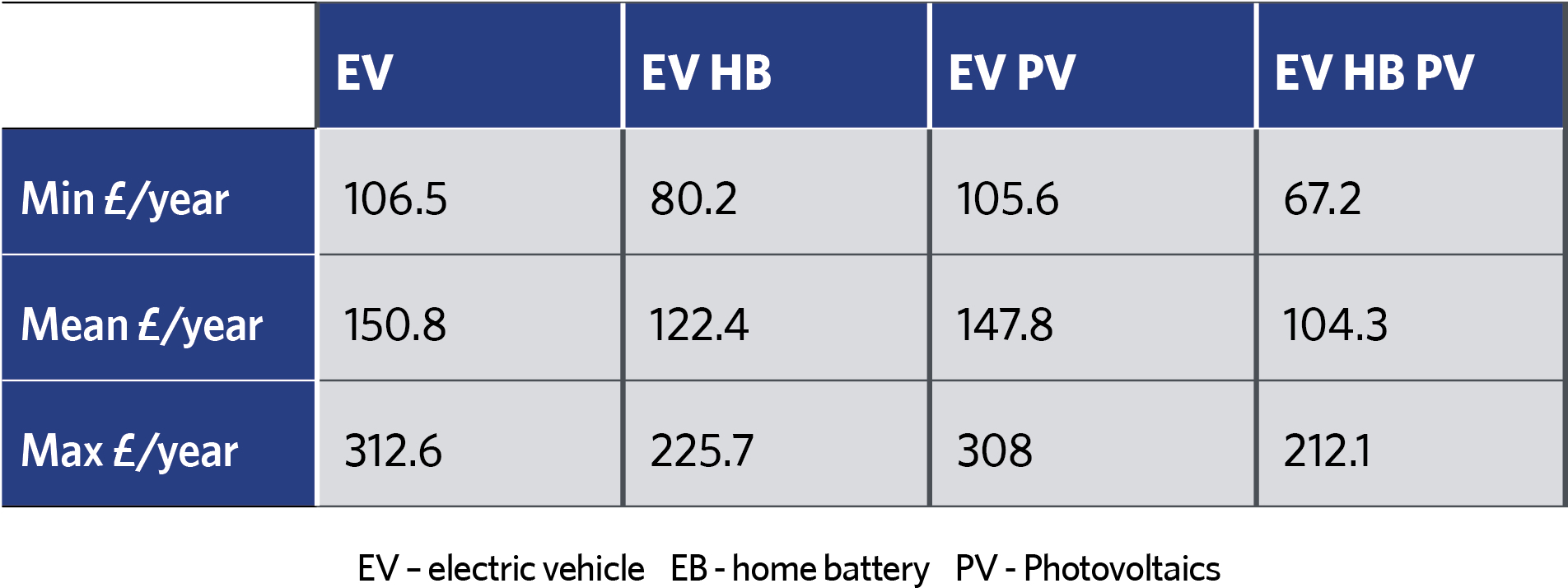
‘What we were really interested in is what this means for the consumer in terms of savings,’ says Swan. ‘But we also wanted to stress the system through changing the weather, environment and demand to replicate the genuine experiences real people might face. Even in a complex energy system, everyone wants to be able to turn all their stuff on and off.’
The modelling and set-up at the SEH allowed researchers to explore questions about the impact on the consumer value of using EVs with or without different assets (for example, with or without PV), with different capacity assets (different size PVs and batteries) and with space and water provided by a heat pump. These were assessed for high, medium and low electricity consumption profiles, derived from data from the National Energy Efficiency Data Framework.
The project investigated those revenue streams that offered the best value and how much this was dependent on those assets employed, those that gave consumers the most independence from the grid, and the effect of energy consumption on revenues.
Results
The results of the Haven study provided an analysis of the benefits for both energy suppliers and consumers.
According to the report, the Upside Energy modelling suggested that an energy supplier optimising for DA market electricity prices and UoS revenues could increase revenue by around £100 per year by adding a V2G-enabled EV to a home energy network, compared with a charged-when-plugged-in base case.
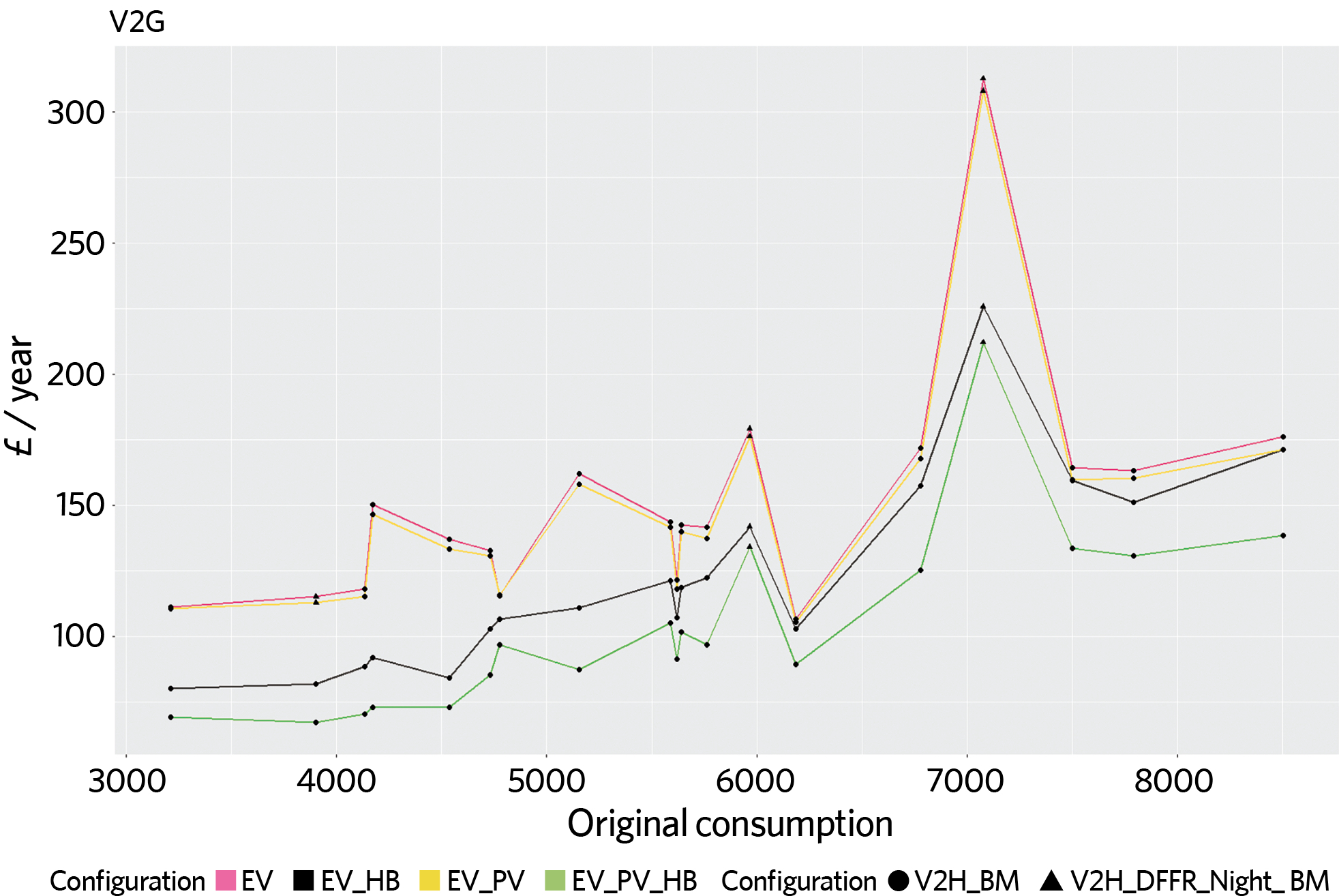
Financial benefits for each configuration and the best scenarios for each household
The total additional revenue available from optimising an energy network consisting of a home battery, smart hot water tank, PV system and V2G-enabled EV was around £500 per year. While the size of these revenues was most sensitive to the specific combination of assets and the size of the home battery the PV array had very little effect on supplier revenues compared with the baseline.
The study also established that a consumer operating on a flat-price profile seeking to maximise self-consumption of PV could generate additional revenue of around £70 per year through adding a V2G-enabled EV – providing other energy storage assets, primarily a home battery, are present to allow energy to be stored when the EV is absent during peak PV generation hours.
Consumers operating the full energy network could expect total revenue of around £300 through increased self-consumption of PV, with these revenues most sensitive to the specific combination of assets and the size of the PV array. The modelling also revealed that small revenue increases were generated with increasing load and when combining into a community where energy can be shared.
Good Energy’s modelling approach included revenues available to a consumer by optimising in V2H mode against a day-night ToU price profile, as well as additional revenues from optimisation in V2G mode to capture DFFR and BM revenues. The results showed a V2H-enabled EV could capture an additional £30-£100 through optimising against the ToU price profile, depending on the asset combination, compared with a base case where a smart charger is used. When including BM and DFFR revenues in V2G mode, total revenues of around £100-£150 could be generated.
Energy house 2.0
The University of Salford is currently in the process of building its new Energy House 2.0 laboratory, a £16m project scheduled to be completed by
spring 2021.
Energy House 2 will be around seven times the size of the original, allowing it to construct and test small commercial building and modern methods of construction within its environmental chambers on the site. The new site is capable of containing two 100m2 detached properties in each chamber.
Energy House 2 will be able to simulate a temperature range of -20oC to 40oC compared with -10oC to 30oC in Energy House 1. It is designed to replicate weather patterns that cover 95% of the world’s population.
Real-world testing
Real-world testing of the solutions and technology configurations in the SEH revealed issues with control, integration and optimisation when individual assets were combined.
Swan explains: ‘Each asset is doing what it was specified to do, to optimise for themselves, but in trying to integrate them, we were trying to do something collectively that the assets haven’t been individually configured to do. They were not necessarily optimising for the whole system. However, there was a lot of good learning in the study about how we might solve those problems.’
While at an early point in the development of such V2G solutions, Swan expects the market to evolve rapidly. ‘In the 20 years I’ve been involved in this area, I’ve never seen anything develop so quickly, from controls and systems to storage and renewables,’ he says.
The investment case for individual domestic V2G/V2H solutions is currently challenging, with relatively modest revenues from such solutions, but Swan believes V2G at scale could reduce stress on the network and absorb excess electricity when necessary.
Where V2G at scale may take off first is in businesses or organisations that use fleets of EVs parked overnight, Swan suggests. ‘There is more of a business case because you have specific control over a large number of assets. But it’s an incredibly fast-moving area, and new business models are emerging all the time.’
Conclusion
The study has offered some useful findings in how V2G solutions can add value in a domestic energy network environment. But, it is still a developing area. ‘What you can see is that, although there is revenue to be earned, a quite complex energy service is required,’ Swan says. ‘You’re no longer a passive consumer, you’re part of the energy system.
‘While you always have early adopters, it has a little way to go before it becomes a bit further up the adoption curve,’ Swan concludes. ‘However, I think it will come quicker than many people might think.’


